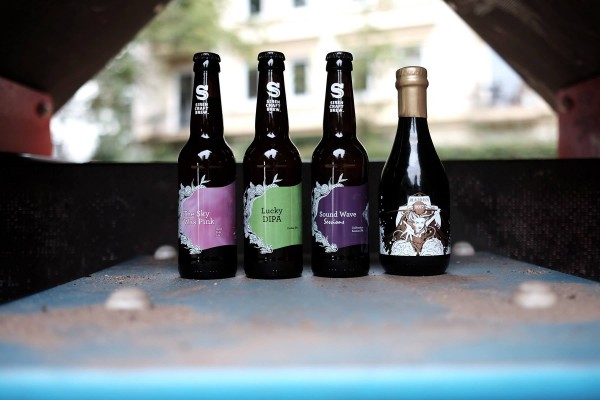Text: Deniz Jaspersen
No matter how big you imagine your brewery to be, double it. And if you can afford it, triple it! Jasper Cuppaige of Camden Brewery had this advice for Darren Anley of Siren. Both met at the 2011 CBC in San Diego. Darren had just sold his IT company and, as a Craft Beer enthusiast, was considering opening a brewery. Originally his plan was to do nothing at first. But it wasn't that easy. He travelled to the States to be inspired. What did Jasper actually mean when he advised Darren to think as big as possible?
Opening a brewery is not a particularly simple matter. The acquisition costs are very high, not to mention the space you have to rent to accommodate it. The inclined Craft Beer connoisseur may suspect industrial megalomania behind this, however, economies of scale can be easily observed. The purchase of a 20hl plant is not so much more expensive than a 10hl plant, but the potential of the brewery is correspondingly greater. Following the advice Siren tripled their original ambitions and bought a 50hl plant, which is already very big for a newly founded brewery and brings corresponding capacities with it. If you have more beer, you can sell more beer. Sounds logical, but it is not without risk. In the beginning it can happen that you don't sell everything and the beer expires due to the short sell-by dates. In addition, you have to brew beers accordingly, from which you can also sell a high quantity. However, the time required to brew one litre of beer is just as high as for 10,000 litres of beer. So it can be worth it to take the risk.
Daren got some more good advice. This came from Kelly Ryan, who worked at Thornbridge brewery at the time. No matter how good you are as a home brewer, get a brewer you trust and give him absolute freedom. Darren quickly found what he was looking for with Ryan Witter-Merithew, an American who was brewing at Fano Bryghus in Denmark. For Siren he left the island brewery behind and moved to England. They developed 5 core beers with which spread across a wide range of popular styles. Their goal was to create American-inspired craft beers with a special twist. In doing so, they paid attention to a high drinkability, and also to the fact that the alcohol content was not too high. Even average drinkers should be able to order more than just a few of them.
Although Siren's goals were ambitious from the start, experimenting is also a central part of their brewery. The brewery was characterized by a certain "Fuck it, let's do it mentality", which over the years was able to surprise with many exciting creations. According to his own statements, Ryan has never been much interested in water or beer chemistry. He is not a laboratory rat, but a brewer who knows how to turn ingredients into beer. Basically, almost everything that grows on trees or bushes has been brewed so far. Coffee and figs turn into a Turkish Stout, peach and cherries to Three Little Fonzies. A tree itself is also used. This is what happened with the Kentucky Tickle Monster where cedar wood was used. For the chefs at the Nordic Food Lab in Copenhagen, a restaurant that specialises in preparing insects, they went even further. Here, an Oatmeal Stout was finished with a kilo of mealworms. For Crema, a white stout, the green coffee beans were soaked in whiskey, roasted and then brewed.
Additionally, Siren has a strong focus on barrel ageing. The warehouse now holds about 400 barrels. One of their most successful creations in this field is the Limoncello IPA, which has matured in bourbon barrels. The IPA was refined in the brewing process with lemon zest and, after maturing, is reminiscent of a whiskey sour. It is perhaps possible that a large brewery will retain its joy of experimentation and thus push the boundaries further? Although Ryan has meanwhile moved back to the USA to work at Hill Farmstead, Siren remains true to this attitude even after more than 300 beers.
The Rainbow Project is one more example of this. Launched in 2013 the collaboration project became an important part of Siren's concept. The initial idea was to find breweries, each of which brews a beer in a specific color of the rainbow. The result was then presented to the public at a joint event. After the great success of the project, two breweries were assigned one colour each in the following year. The list of participants is very impressive with Modern Times, Beavertown, Jester King, and Magic Rock leading the way.



